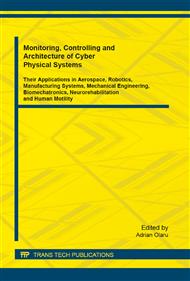p.515
p.524
p.534
p.542
p.552
p.561
p.569
p.578
p.588
Particular Aspects for End-of-Life Assessment, for Autochthonous Production of Automotive Batteries and the Assessment of its Impact on the Environment
Abstract:
Any product must be viewed from an environmental perspective, starting with the raw materials used for its generating to final disposal, including going out of use of the product, namely along its entire life cycle.Life cycle analysis consists of collecting necessary data and information (materials, consumption of energy and natural resources) to obtain the product, resources and consumption recorded during its use, the disassembly of product in components and the analysis of recovery processes, the identify of impacts on the environment which appear after the going out of use of product.After the going out of use of auto batteries it is aimed their recovery in order to capitalize and to recycle its components. The capitalization and recycling of auto battery is made by S.C. Rebat Copsa Mica S.A., which has as activity aim, the extracting of lead and other raw materials, through a complex technological process.Given that approximately 800 of these auto batteries of 12V-52Ah type, produced by S.C. Rombat S.A., are coming monthly from Bacau County and from its surrounding areas, the authors of the paper make a modeling of end-of-life, using specialized software Sima Pro 7. They make also an identification of impacts on environmental that occur during this period and they make recommendations and propose ways to reduce these results of impacts.
Info:
Periodical:
Pages:
552-560
Citation:
Online since:
October 2014
Keywords:
Price:
Сopyright:
© 2014 Trans Tech Publications Ltd. All Rights Reserved
Share:
Citation:


